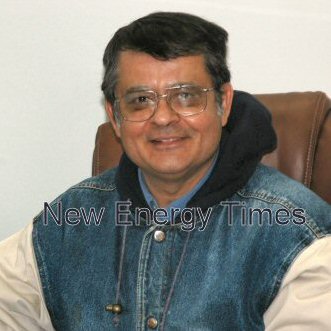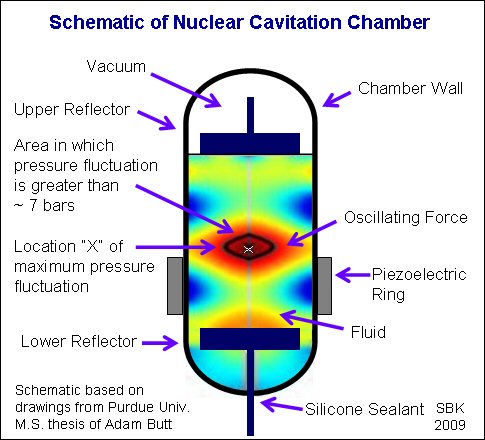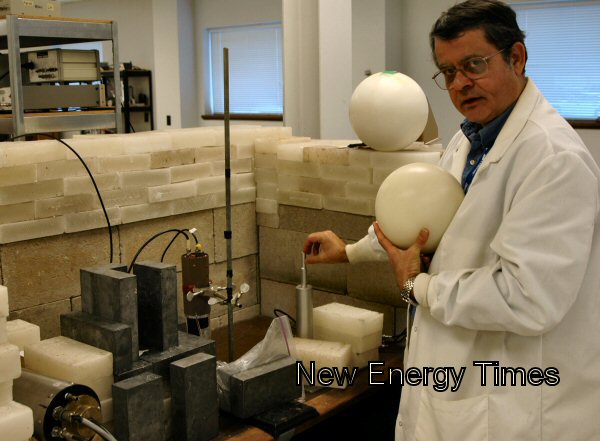Federal Investigations Reveal Academic Backstabbing at Purdue University (Part 2)
Background
Taleyarkhan was born in 1953 near Mumbai, India. Based on his academic excellence, he was awarded a scholarship from the prestigious Tata organization in India and earned his first degree, in mechanical engineering, at the Indian Institute of Technology in Madras, India. At 24, he moved to the United States and earned a master’s degree in nuclear engineering and science, a master’s degree in business, and a doctorate in nuclear engineering from Rensselaer Polytechnic Institute.

Rusi Taleyarkhan (Photo: S.B. Krivit)
He worked at several commercial laboratories, and as soon as he was eligible, in 1988, Taleyarkhan became a U.S. citizen and went to work at the U.S. Department of Energy’s Oak Ridge National Laboratory. In 2003, he was recruited to become a nuclear engineering professor at Purdue University.
While at Oak Ridge, Taleyarkhan was given a high-level security clearance from the Department of Energy and worked with technologies for national security and defense, nuclear reactor thermal-hydraulics, and safety technology.
He has held several positions of leadership in the American Nuclear Society, has been a consultant to the International Atomic Energy Agency and the Japan Atomic Energy Research Institute, is a founding director and member of the national Acoustic Fusion Technology Consortium, and is a founding member and faculty advisor at Purdue University’s Energy Center.
Basic Concepts
The science of nuclear cavitation is based on several related concepts. The first is a phenomenon known as cavitation. It was first observed in 1917 by the British navy, and it is generally, but not completely, understood. The navy observed damage to a ship’s propellers coincident with the occurrence of tiny bubbles in the water. Physicist Lord Raleigh was the first to begin investigations.
Encyclopedia Britannica defines cavitation as “the formation of vapor bubbles within a liquid at low-pressure regions that occur in places where the liquid has been accelerated to high velocities.”
The second concept is sonoluminescence, which derives its name from the effect of transforming sound waves into light. Sonoluminescence is not fully understood, either. In the 1930s, two German physicists, H. Frenzel and H. Schultes, made the connection between cavitation and sonoluminescence, using acoustic waves to trigger the cavitation.

Schematic of nuclear cavitation chamber. Regions of high and low acoustic pressure are shown. Based on drawings by Purdue University graduate student Adam Butt.
In the Taleyarkhan group’s experiment, the glass chamber is filled with either normal or deuterated acetone. A piezoelectric ring sends ultrasonic acoustic waves into the cell which create an oscillating force. It’s the deuterated acetone, comprising deuterium atoms rather than hydrogen atoms, which is essential for the nuclear reactions. This is the first innovation of the group’s design.
The second innovation is that the researchers found a way to control a group of bubbles and make them implode together in a coherent fashion; this is called multi-bubble cluster sonoluminescence, Taleyarkhan told New Energy Times.
“We amplified the process much more than you could do with a single bubble,” Taleyarkhan wrote. “As a result, we are able to grow the bubbles much larger than other researchers have previously done in the sonofusion field.”

Rusi Taleyarkhan with benchtop setup used for nuclear cavitation experiments at Purdue University
Taleyarkhan’s group was able to increase the size of the bubbles as well as the size of the bubble clusters. In Putterman’s approach, Taleyarkhan wrote, the bubbles start from about 10 microns and increase in size to about 100 microns, a factor of 10. The Taleyarkhan group’s bubbles start from the nanoscale and increase in size to the multi-millimeter scale, a factor of 100,000.
“Our bubbles grow 10,000 times more than Putterman’s bubbles,” Taleyarkhan wrote, “and consequently, this leads to a trillion times more stored energy prior to implosion in our experiments.”
The rapid expansion of the individual bubbles, followed by their controlled, rapid and violent collapse, creates the physical conditions that lead to the nuclear reactions.
Oak Ridge
Taleyarkhan faced his first battle in 2001, just weeks after he and his colleagues asked Oak Ridge management for permission to publish their claim in a journal. Oak Ridge lab directors asked two physicists in the Physics Division, Dan Shapira and Michael Saltmarsh, to check the Taleyarkhan group’s work.
In 2013, New Energy Times investigated the 2001-02 Oak Ridge conflict and revealed publicly, for the first time, key documents that reverse the erroneous public understanding of the outcome of this scientific finding and correct the historical record.
For 10 years, the public’s understanding of this research has been that 1) Shapira and Saltmarsh made their own independent replication of the Taleyarkhan group’s experiment, 2) in doing so, they failed to replicate the group’s work, and 3) by this disconfirmation, they proved that the original experiment by the Taleyarkhan group was wrong.
The New Energy Times investigation found that 1) Shapira and Saltmarsh did not perform their own experimental replication, 2) they measured data from an experiment set up and operated by the Taleyarkhan group, 3) the data they took was positive and confirmed the group’s claim, 4) internal documents revealed how Shapira and Saltmarsh attempted but failed to hide the data from Oak Ridge management and 5) Shapira and Saltmarsh attempted to hide and succeeded in hiding the data from the public.
In 2002, Shapira and Saltmarsh published in Physical Review Letters their (false) disconfirmation and (false) representation that they had performed their own independent experiment. In a 2012 interview with New Energy Times, Shapira admitted that he and Saltmarsh did not perform their own independent experiment. After New Energy Times published the recovered documents and the recorded interview with Shapira, members of the Taleyarkhan group attempted to publish a correction in Physical Review Letters.
In an e-mail, Daniel Kulp, editor-in-chief of Physical Review Letters, wrote that the journal did not consider an editorial correction by the journal or a corrective response from the Taleyarkhan group to be appropriate. When asked by New Energy Times what form of correction would be appropriate, Kulp did not respond.
Even though the data he took showed a positive signal, Shapira held fast to his opinion during the 2012 interview that it did not.
“I was asked to do it. I didn’t volunteer to do it,” Shapira said. “I wasted a year on the analysis and the write-up and setting up the experiment. As far as I was concerned, it was a waste of a year of my time.
“I didn’t get a great ‘thank you,’ but that’s OK. I did what I thought was right, and I was required to do it. I couldn’t tell the lab associate director, ‘No, I’m not going to read the paper. No, I’m not going to do the experiment.’ That was not my choice.
“I think the lab associate director did the right thing. My question was, ‘Did we see it?’ No, we didn’t. That’s all. If someone else saw it, fine. They have to prove it to me or to anyone.”
Shapira did not want to do the analysis. Lab managers were concerned that the news could turn into another “cold fusion” fiasco.
The reactions observed in the cavitation experiments occur within bubbles, and whether the underlying process is fusion or some other nuclear process remains debatable. What is certain, however, is that the data taken by Shapira and Saltmarsh, revealed only in their internal reports, unequivocally confirmed evidence of nuclear reactions: excess tritium and statistically significant excess neutrons. Even Shapira’s own words in these documents summarize the confirmed data.
Not only does the Oak Ridge story illuminate how scientists can behave unscientifically, it also shows the devastating price paid by the Taleyarkhan group, whose members assumed that scientific facts can speak for themselves.
The impact of Shapira and Saltmarsh’s incorrect information had a tremendous impact, first on the science media then, as a result, on public opinion. After a decade of ambiguity in the shadow of the alleged Shapira-Saltmarsh disconfirmation, the recovered documents provide confirmation of the work of Taleyarkhan and his colleagues.
The documents also affirm the courageous decision of Donald Kennedy, the editor-in-chief of Science, who decided in 2002 to publish the Taleyarkhan group’s first research paper, “Evidence for Nuclear Emissions During Acoustic Cavitation” (Science 295, p. 1868), in defiance of attempts by prominent members of the U.S. physics establishment to convince him not to. Kennedy had not seen the set of internal Oak Ridge documents until New Energy Times published them in 2013.
Many scientists in Taleyarkhan’s position would have fought hard and publicly against the misrepresentations that Shapira and Saltmarsh made to the press in 2002, but that was not Taleyarkhan’s style. The unrecognized myth of the Shapira and Saltmarsh disconfirmation, and Taleyarkhan’s passive stance with the media during that time, made him vulnerable to later becoming an easy target for political attack by some of his academic peers.
New Energy Times published the results of this investigation in a 12-part series, “2001 Oak Ridge Nuclear Cavitation Confirmation Uncovered,” on July 18-29, 2013.

